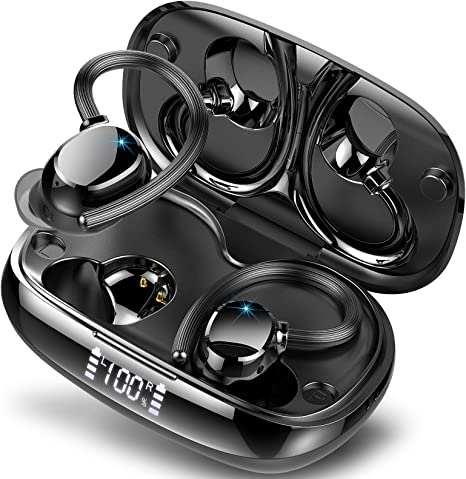The Ghost in the Machine: An Archaeology of Sound in the Digital Age
Update on July 13, 2025, 4:45 p.m.
It begins with a disturbance in the air. Imagine a great bronze bell in a medieval tower, struck once. A single, violent shudder propagates outwards, a pressure wave journeying through the atmosphere at roughly 343 meters per second. This wave, a purely physical event, ripples through the town square, bounces from stone walls, and eventually fades into silence, its energy dissipated into the vastness. It is gone forever. Or is it? For millennia, humanity has been haunted by this ephemerality. How do we hold onto a moment? How can we capture the ghost of a sound, the fleeting energy of a spoken word or a line of music, and give it a life beyond its brief, physical existence?
This ancient question finds a fascinating, almost whimsical answer in a small, unassuming box like Teenage Engineering’s conceptual EP-1320 Medieval Sampler. But the device itself is merely a lens. Through it, we can embark on a kind of sonic archaeology, digging deep into the very nature of sound, time, and memory, to understand the science that finally allowed us to capture the ghost in the machine.

Capturing the Ghost
To capture a sound is to perform an act of profound translation. The analog world, like that traveling bell wave, is continuous and infinitely nuanced. The digital world of a sampler is one of discrete, countable numbers. The bridge between these two realms is built upon one of the most elegant principles in information theory: the Nyquist-Shannon sampling theorem.
Think of it not as a complex equation, but as the weaving of a perfect net. To catch a fish, your net’s mesh must be smaller than the fish itself. Similarly, to “catch” a sound wave, your “net” of measurements must be woven at a rate at least twice as fast as the highest frequency you wish to capture. This rate is the sample rate. When you press ‘record’ on a sampler, its Analog-to-Digital Converter (ADC) begins casting this net, taking thousands of numerical “snapshots” of the wave’s pressure level every second. A 44.1kHz sample rate, the standard for audio CDs, means casting the net 44,100 times per second.
The result is not the wave itself, but a phenomenally detailed blueprint of it—a long string of numbers stored in the device’s memory. It’s the sonic equivalent of a flipbook. Each page is a static image, but when flipped at the right speed, the illusion of seamless motion—or in this case, sound—is recreated. What sits inside the sampler’s memory is not the soul of the bell toll, perhaps, but its digital echo, a ghost whose form is so precisely mapped that it can be summoned back to life with breathtaking fidelity.

Rebuilding the Skeleton
A collection of captured ghosts is a library of memories. But music is more than memory; it is memory organized in time. This is the work of the sequencer. The impulse to sequence sound, to encode it for precise repetition, is far older than silicon chips. It’s visible in the graceful arcs of medieval neumes, the earliest form of musical notation, which instructed a choir when to raise or lower their pitch. It’s engineered into the pinned cylinders of 18th-century music boxes and the perforated paper rolls of player pianos. All are ancestors of the digital sequencer, united by a common goal: to tame the flow of time.
A modern sequencer, like the four-track system described for the EP-1320, is a temporal loom. It operates under the beautiful tyranny of a quartz-crystal clock, a tiny, vibrating heart that pulses millions of times per second, providing an unyieldingly precise grid of time. Upon this grid, the musician becomes an architect. Track one might be the percussive rhythm, a sequence of short, sharp samples. Track two weaves in a bassline, built from a single, captured low note. Tracks three and four add melodic and atmospheric threads. The sequencer doesn’t just play these sounds back; it reconstructs a moment, layering these digital ghosts into a single, cohesive, living structure. It provides the skeleton, the rigid framework upon which the soul of the music can be draped.
Giving it a Soul
If sampling gives a sound a digital body and sequencing gives it a skeleton, then Digital Signal Processing (DSP) is what breathes soul into it. DSP is the art of digital alchemy, where the base metal of a raw sample is transmuted into sonic gold. This magic is rooted in profound mathematics, most notably the Fourier Transform. This principle states that any complex waveform, like our bell toll, can be deconstructed into a combination of simple sine waves of different frequencies and amplitudes. It’s like a sonic prism, breaking a sound down into its constituent colors, its fundamental DNA.
Once a sound’s DNA is mapped, DSP algorithms can rewrite it. A reverb effect, for instance, is far more than a simple echo. An advanced technique like convolution reverb starts with an “impulse response”—a sample of a real acoustic space, like a cathedral or a cave. The algorithm then mathematically “multiplies” your dry sample with the cathedral’s acoustic signature. The result is astonishing: your voice, recorded in a dead-silent room, is reborn as if it were singing from the stone vaults of Notre Dame. Effects like filters, delays, and modulation are all just elegant mathematical functions applied to the sound’s digital essence, allowing a creator to place a sound in an impossible space, to stretch it beyond physical limits, and to give its ghost a new and expressive voice.

The Wisdom of the Tangible Hand
With all this power, why would anyone choose a small, physical box over the near-infinite capabilities of a computer? The answer lies not in the machine, but in our own minds. Imagine an artist in a studio late at night. The screen is off. The only light comes from the soft glow of the instrument’s LEDs. Their hands are on the controls, fingers on faders and buttons. This direct, tactile connection fosters a state of deep, focused immersion that psychologist Mihaly Csikszentmihalyi famously termed “Flow.”
The boundless options of a Digital Audio Workstation (DAW) can be a source of paralysis, a tyranny of choice. A device with intentional limitations—a fixed number of tracks, a finite amount of memory—creates a framework of “creative constraint.” Like a poet forced to express a grand idea within the fourteen lines of a sonnet, the musician is pushed to make more deliberate, more meaningful choices. A limited tool set demands ingenuity. You don’t have a thousand sounds, so you must learn to transform the ten you have. This process, this dialogue between the artist’s intent and the tool’s defined boundaries, is often where true creativity is born. It’s a dance between the human hand and the responsive machine, a feedback loop of thought, touch, and sound that is immediate, joyful, and profound.
We return, finally, to the echo of the bell. Through the lens of our sonic archaeology, we see it now not as a fleeting event, but as a seed of infinite potential. The sampler grants it digital immortality. The sequencer gives it a place in a new timeline. The DSP engine dresses it in new colors and sends it to new worlds. The instrument itself invites us to play. It reminds us that technology, at its best, is not about replacing human skill, but about extending our senses and focusing our intent. It invites us to become better listeners, to hear the ghosts of history in the hum of the present, and to find the hidden music in the noise all around us.









